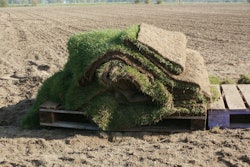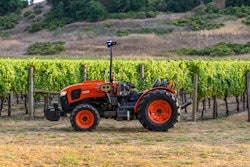 Photo: Pixabay
Photo: PixabayThis is part one in a two-part series. The sequel article will publish on TLC tomorrow.
Many landscaping companies today are all about utilizing technology to make their jobs easier, and one piece of technology that is sure to lend a hand is landscape design software.
While there are numerous options available to green industry professionals, we’ve talked with three software brands to find out exactly what makes their product tick, as well as what sets it apart from its competition.
Usability
David Sloan with PRO Landscape says this year marks their 24th in business and although software has changed tremendously over the years, he believes their software has changed and adapted to fit the needs of today’s green industry professionals, whether they are trained designers or not.
 Photo: PRO Landscape
Photo: PRO Landscape“Our (software) is really one that’s directed towards the contractor, and a lot of that has to do with the fact that we’ve made every possible effort that we can to make a piece of software that gives the user a lot of power but at the same time is relatively simple and straightforward,” Sloan says.
The way PRO Landscape makes their software so easy to use, Sloan says, is by taking out a good portion of the engineering and mechanical terminology.
In terms of usability, there are three main functions of PRO Landscape that set it apart from other design software, according to Sloan: traditional CAD specific for landscape, photo imaging with an expansive design library and an estimating piece.
Whether the user is well-versed in the ways of landscape design software or has never used a program previously, Sloan says the goal for PRO Landscape is to offer a product that almost anyone can use. Many customers, he says, are able to teach themselves how to use the software simply by watching the provided tutorials.
“If they have the willingness to sit down and look through some tutorials, maybe refer to the PDF manual that we have, most people pick this thing up pretty quick all on their own,” he says. “Especially with everything that’s been going on with the labor market, being able to easily transition into being able to use the product is going to be key.”
Nathan Qualls, product support lead with Keysoft Solutions, says their KeySCAPE software allows landscape architects to have more time for design by automating menial tasks, easing revisions when collaborating with architects and civil engineers and improving accuracy.
There are two types of KeySCAPE software, Qualls says: KeySCAPE and KeySCAPE LT. With the traditional KeySCAPE, Qualls says users must have a pre-existing license of AutoCAD; with KeySCAPE LT, Qualls says the AutoCAD is built in.
 Photo: Keysoft Solutions
Photo: Keysoft Solutions“It really enables a designer to do work on, basically, any scale of project, whether it’s residential, a large-scale commercial or even a huge master plan for a community-scale project,” Qualls says. “This is because you do have that AutoCAD engine and you can deliver your drawings in DWG format, which can be helpful if you’re working with other consultants, engineers, architects and that kind of thing.”
Qualls says KeySCAPE gives users the ability to lay out detailed paving areas, edging and pathways with an accurate area and unit takeoff. He adds that users are also able to annotate and input property lines from legal descriptions, lay out building footprints, parking lots, golf courses, sports fields and other site elements via the software’s selection of site tools.
Sharing these designs with project collaborators, Qualls says, can be done easily by using the KeySCAPE free Revit Plugin, which allows users to exchange surface models with multiple design platforms.
Since KeySCAPE runs on an AutoCAD format, Qualls says there can be a slight learning curve involved with the software.
“Having a basic understanding of AutoCAD is really all that’s needed to jump into our modules,” Qualls says. “I would say the advantage of the AutoCAD platform, though, is it’s kind of a universally accepted file format and (makes) data exchange with other site designers and architects (easier).”
Eric Gilbey, product marketing manager with Vectorworks, says the Landmark version, a green industry-specific version, of their software has been around since 2001.
Because Vectorworks comes with industry-specific programs for a multitude of industries, Gilbey says users of Landmark can also benefit from crossover tools used in other industries, such as construction, entertainment and lighting. Gilbey adds that Landmark users are also able to design in both 2D and 3D.
“Ultimately, we see more of our users doing 3D models, and the big benefit for us is that it happens dynamically because they’re one in the same object,” Gilbey says. “So, what we see from some of the other solutions out there is that you’re either producing a plan and you’re limited to just the 2D line work and then some of those solutions allow you to apply rendering or coloration to your plans. And the symbols might be smart, the objects themselves might be smart but you’re really just working in a 2D representation.”
 Photo: Vectorworks
Photo: VectorworksGilbey says this 3D aspect has proved extremely beneficial to customers because when changes are made to a 2D plan, the 3D model of it is instantly updated, and when a change is made to a 3D model, the changes occur instantly on the 2D plan.
Gilbey says that if users are typically quick learners, there won’t be much of a learning curve when diving into Vectorworks Landmark, but if they are coming from primarily using hand drawing for designs, he does say it can sometimes take a little longer to adjust to the technology.
He does note, however, that there are numerous online tutorials, in-person classes and user guides available to watch and interact with to help learn the software.
“The thing that we always recommend to people is that based on what you’re already doing in your workload for each day, that you really need to mark out a certain period of time to consistently get into the software and get to know what the processes are,” he suggests.
Check back tomorrow for part two of this article, where we’ll take a look at these software design libraries, costs and how the software is used.










